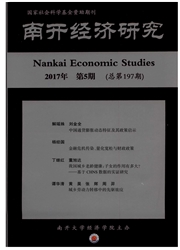

 中文摘要:
中文摘要:
本文采用我国2010年一季度到2016年一季度的数据,在含有和不含有股票市场的DSGE框架下,比较分析了产出、通货膨胀、企业贷款、家庭贷款和家庭消费对外生冲击的响应。结果表明,含有股票市场对外生冲击的响应明显高于不含有股票市场的响应;在含有股票市场的情况下,股票市场价格的上升对家庭贷款、企业贷款和家庭消费的影响最大,其它依次是经济增长和货币政策变动。这说明借助股票市场沟通家庭部门与企业、商业银行和地方政府融资平台之间的融投资关系,可以实现企业去杠杆、家庭加杠杆的资产负债再平衡。
 英文摘要:
英文摘要:
We analyzed the output, inflation, enterprise loan, household loan and household consumption which response to the exogenous shocks at the DSGE models with or without stock market by using the data from 2010Q1 to 2016Q1. The result shows that the response to the ex- ogenous shocks in the model with stock market is significantly higher than the model without stock market. In the case of the stock market, the rise in stock price has the greatest impact on household loan, enterprise loan and household consumption. In the next place is the economic growth and monetary policy adjustment. It indicates that accessible to stock market can reconcile the relationship between investment and financing among household, enterprise, commercial bank and government financing platform and even more can fulfill the re-balancing of balance sheet by enterprise de-leveraging and household leveraging.
 同期刊论文项目
同期刊论文项目
 同项目期刊论文
同项目期刊论文
 期刊信息
期刊信息
